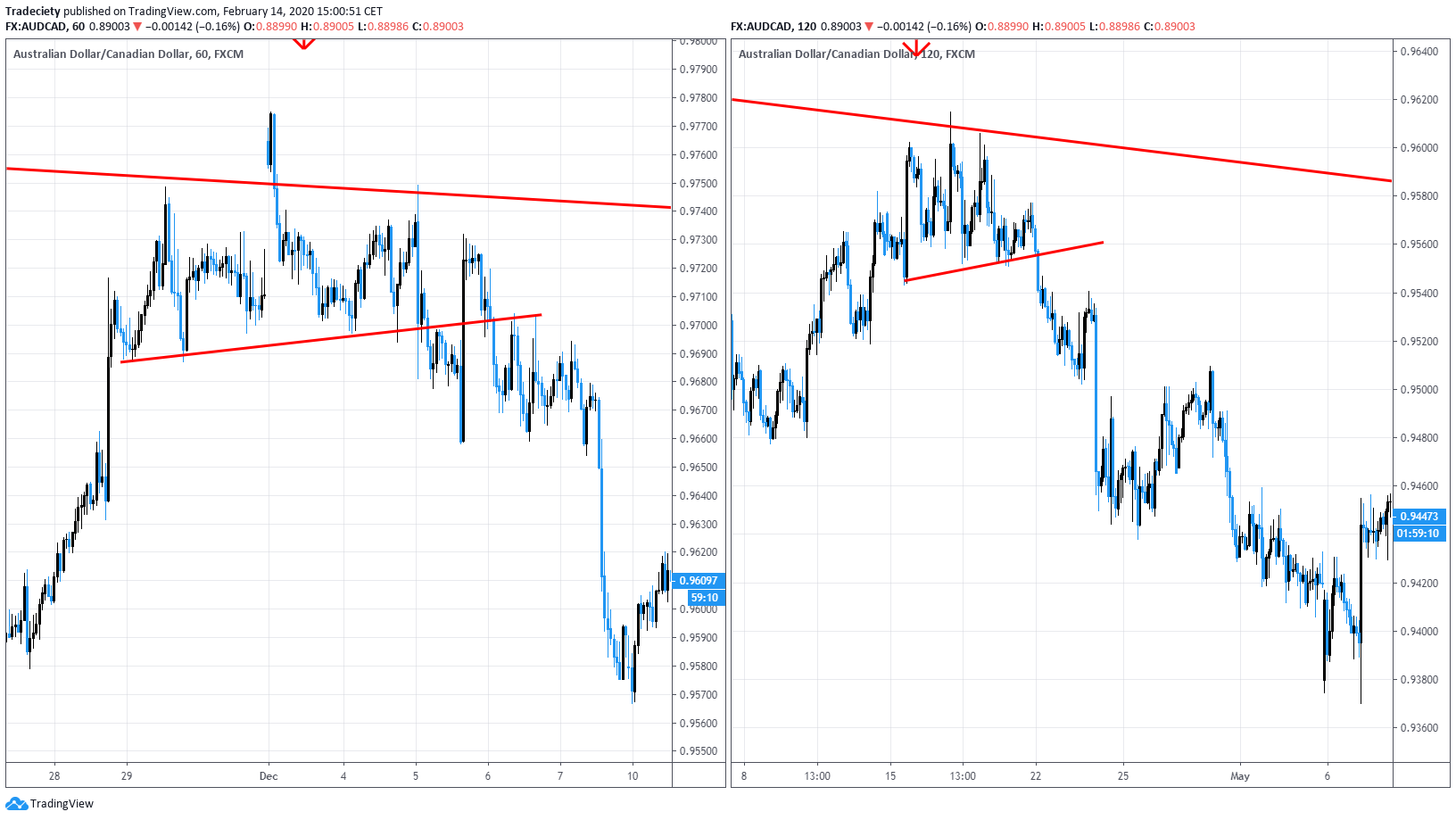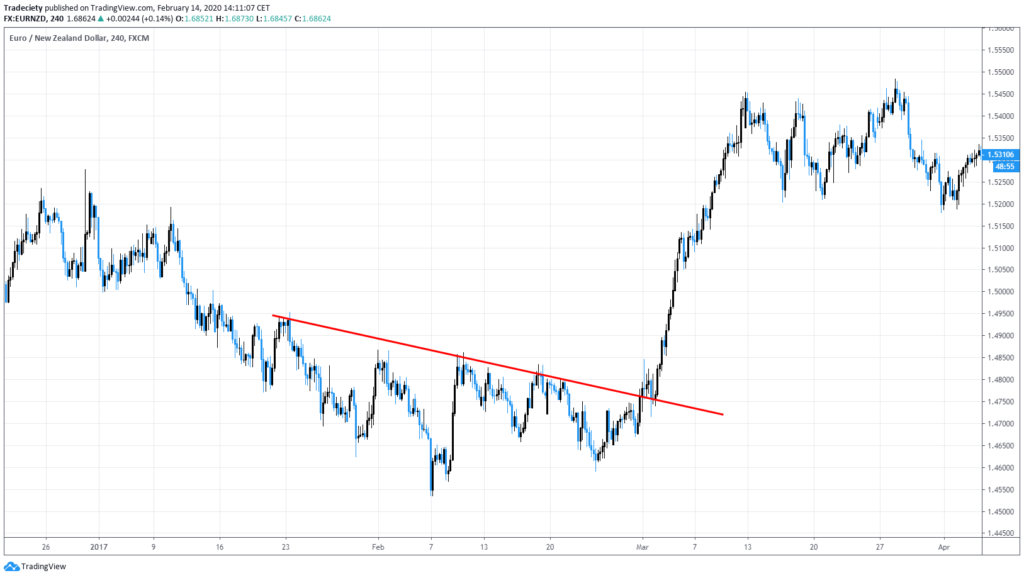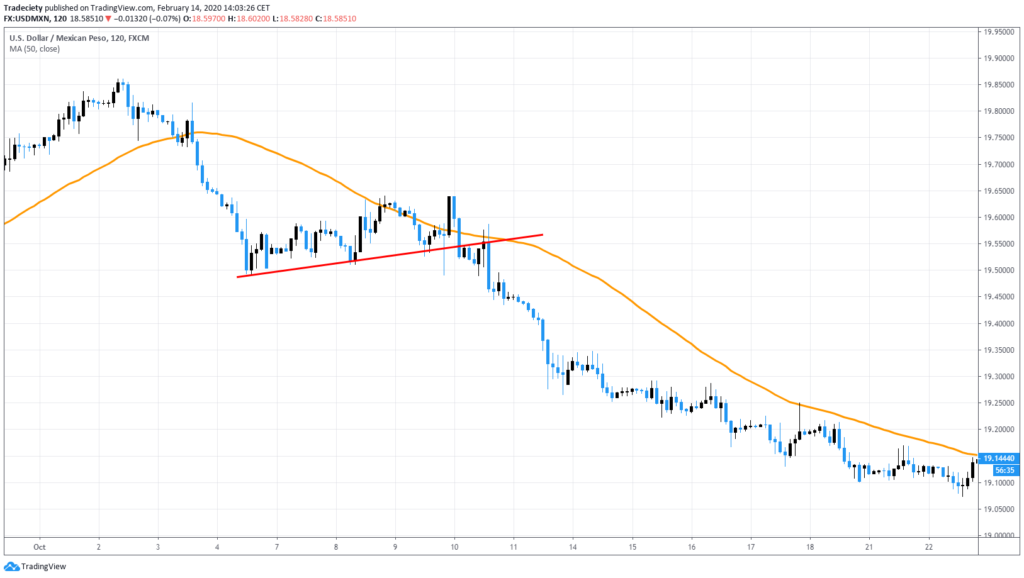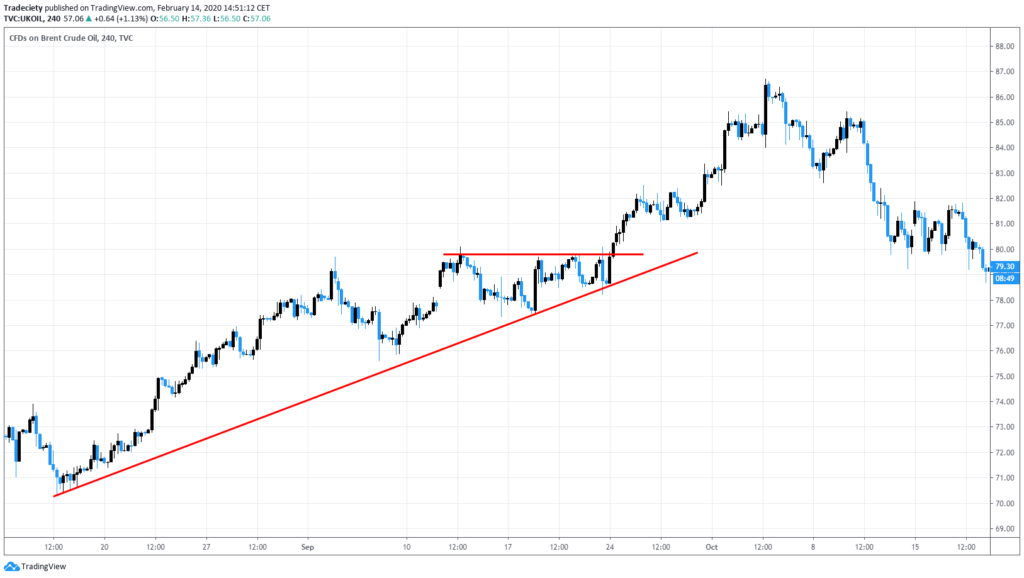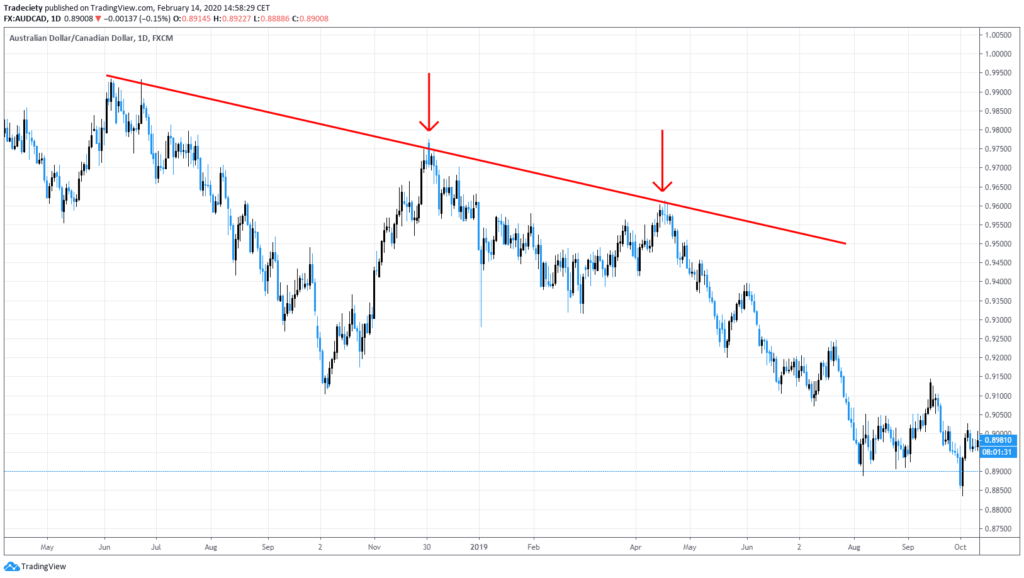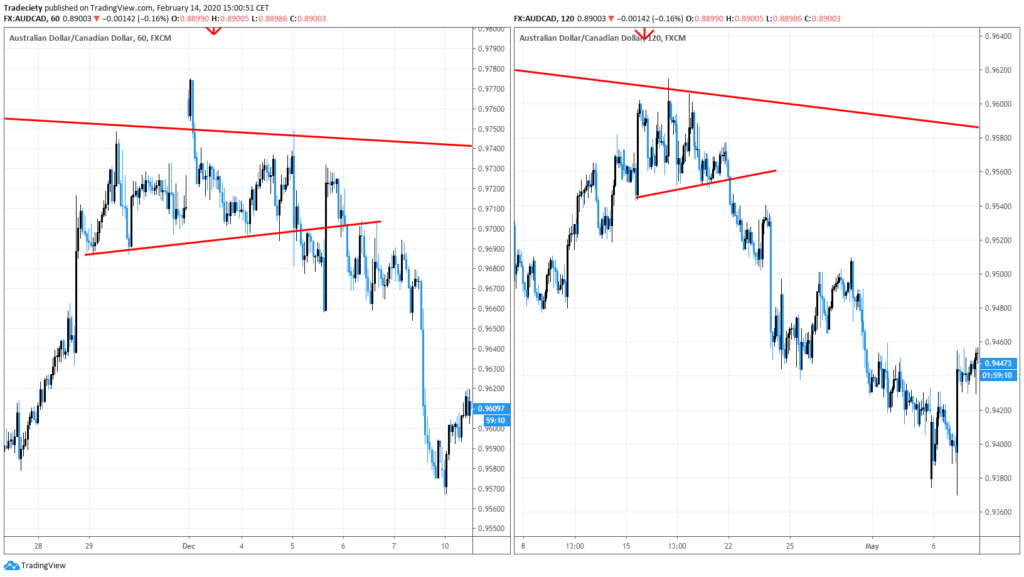Trendlines could be nice buying and selling instruments if used accurately and on this put up, I’m going to share three highly effective trendline methods with you.
However first, consider the 2 most vital ideas relating to drawing and utilizing trendlines:
- A confirmed trendline has 3 touchpoints
You may at all times join any two random factors in your charts however solely in case you have a 3rd one, you’re coping with a validated and lively trendline. - By no means minimize by the our bodies
It’s OK to chop by the candlestick wicks when drawing a trendline, however by no means minimize by the our bodies!
#1 Break and Retest
The break and retest technique is kind of a standard technique utilized by many various merchants.
The concept is that after you recognized an lively trendline, you await the worth to interrupt out of it. Generally, the worth will simply run away and the worth received’t look again. Nevertheless, if the worth trades again into the trendline, the retest can usually be traded as a excessive chance setup. The timing could be completed on a decrease timeframe or straight on the identical timeframe the place you recognized the trendline.
The trendline acts as each the entry set off and in addition helps to put stops. The cease loss is mostly positioned on the opposite aspect of the trendline and the trendline acts as a safety stage between the entry worth and the cease loss.
The extra touchpoints a trendline has, the higher it’s fitted to the break and retest technique. Within the instance beneath, the trendline has not less than 3/4 legitimate touchpoints. Throughout the breakoutthere was lots of volatility out there and the worth hovered across the trendline for fairly some time.
The extent of aggressiveness of the dealer determines how early the entry can be taken. An aggressive and extra risk-seeking dealer may get right into a commerce as quickly as the worth touches the trendline. A extra conservative dealer would await the worth to tug away from the trendline and exhibit indicators of momentum into the commerce path.
There is no such thing as a proper or fallacious and entry timing depends upon the preferences of the dealer.
#2 Trendline Flag
Whereas Break & Retest eventualities could be thought of reversal buying and selling or early trend-following, flags classify as common or late trend-following.
With flags buying and selling, you search for a longtime pattern after which await a consolidation/pullback. In the event you can describe the pullback with a trendline, then it could be attainable to commerce such a flag as soon as the worth has damaged the trendline and resumed buying and selling into the pattern path.
Within the screenshot beneath, the worth was first in a downtrend earlier than the pattern paused and established a flag outlined by the trendline. Right here, we will achieve extra insights into the market members; whereas the preliminary downtrend was robust and the worth fell rapidly throughout a brief time period, the bullish flag patterns solely confirmed weak shopping for curiosity. Evaluating the pattern depth may help with understanding how possible a trendline break may be. On this instance, the downtrend was considerably stronger than the bullish flag sample which implies a better probability for a pattern continuation decrease.
It’s also attainable so as to add a longer-term transferring common to your charts relating to flag buying and selling. The 50 MA helps figuring out the long-term pattern and such a dealer would solely search for flag patterns that sign a continuation into the pattern path.
Within the screenshot beneath, the transferring common signifies a downtrend as a result of the worth was buying and selling beneath the transferring common. The flag sample signifies a brief pause and the break of the trendline confirmed the pattern continuation.
#3 Trendline Bounce
Trendline bounces are additionally trend-following buying and selling approaches. In distinction to the flag sample, the trendline isn’t used to time commerce entries, however to establish eventualities the place the trendline is appearing as help or resistance.
Within the screenshot beneath, the worth bounced off the trendline for the third consecutive time, confirming the validity of the trendline. Then, merchants would search for different technical patterns across the bounce to time commerce entries. On this case, the worth has established a horizontal resistance stage across the trendine bounce. The horizontal stage then permits to time the trades after a breakout.
On this technique, the dealer may both be further conservative and place the cease loss all the best way beneath the trendline, or use a cease loss beneath the resistance stage.
Once more, there isn’t any proper or fallacious. All of it depends upon the danger urge for food of the dealer. I wrote about cease loss methods earlier than.
Trendline bounces may be utilized in a multi-timeframe method and as soon as a long-term trendline has been established, like within the screenshot beneath, a dealer may then transfer to the decrease timeframes and time his trades utilizing different technical ideas.
Within the following, we’re going to try the state of affairs on the decrease timeframe for the 2 trendline bounce eventualities that I marked with purple arrows.
On the left, we see the primary bounce (first arrow). The value motion was fairly messy right here so in all probability no commerce entry would have taken place right here.
On the proper, the worth supplied a Head and Shoulders construction and with the assistance of one other, short-term trendline, the dealer may have timed the commerce.
Utilizing a multi-timeframe method may help some merchants get into trades earlier and in addition discover larger reward-risk-ratio eventualities. Nevertheless, you too can commerce the trendline bounce straight on the upper timeframe if a good candlestick sample is current.
Trendlines could be nice instruments to have in your toolbox as merchants and a few folks discover them to be extra dependable than common, horizontal help/resistance.

